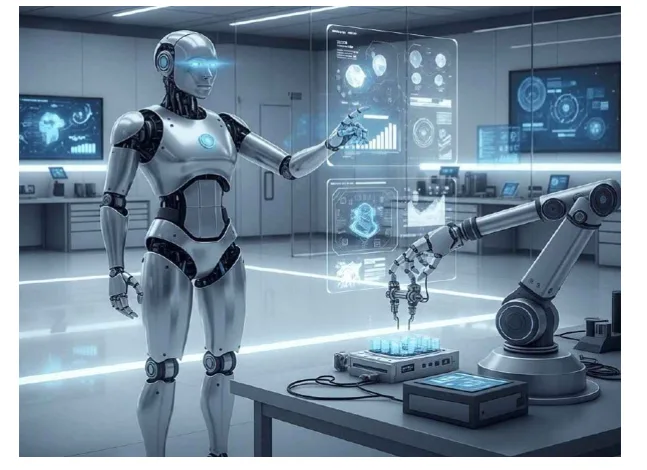The Future of Humanoid Robots: Transforming Industries and Everyday Life

Introduction
Humanoid robots are no longer confined to the realms of science fiction. Over the past decade, advances in robotics, artificial intelligence, and machine learning have turned these machines into practical tools that are reshaping industries and everyday life. Far beyond simple automation, humanoid robots are now capable of understanding and interacting with humans, performing complex tasks, and learning from their environments. This shift marks a significant milestone in the integration of robotics into society, offering exciting possibilities for healthcare, education, industry, and even our homes.
Revolutionizing Healthcare
The healthcare sector is experiencing one of the most transformative impacts from humanoid robotics. These machines are being deployed in hospitals and care facilities to assist medical staff in routine tasks, monitor patient health, and even provide companionship to elderly patients. For example, robots can track vital signs in real-time, alerting nurses to any anomalies and ensuring faster response times. In addition, humanoid robots are being developed to assist in surgeries, offering precision that surpasses human capabilities in delicate operations.
Moreover, the emotional support provided by social humanoid robots is gaining recognition. Elderly or isolated patients can interact with these machines, engaging in conversation, cognitive exercises, or even light physical activity guided by the robot. This not only improves the patients’ mental well-being but also alleviates the workload of healthcare professionals, enabling a more efficient and compassionate healthcare environment.
Transforming Customer Service
Retail, hospitality, and other service industries are increasingly integrating humanoid robots to enhance customer experiences. These robots can perform repetitive tasks such as checking in guests, answering frequently asked questions, or guiding visitors through complex facilities. Unlike traditional automation systems, humanoid robots can interact naturally, recognize human emotions, and adapt their responses accordingly.
Companies that embrace humanoid robots in customer-facing roles gain several advantages:
- Operational efficiency: Robots can operate 24/7 without fatigue.
- Consistent service quality: Machines provide standardized assistance to every customer.
- Cost savings: Reducing repetitive labor allows human employees to focus on higher-value tasks.
For instance, some luxury hotels now employ humanoid robots at the front desk to greet guests, provide directions, and even offer personalized recommendations for dining or entertainment. Similarly, retail stores are experimenting with humanoid assistants that can help customers locate products and suggest complementary items based on preferences.
Industrial and Manufacturing Applications
Humanoid robots are also revolutionizing manufacturing environments. While traditional robots excel at repetitive tasks on assembly lines, humanoid robots bring a higher degree of flexibility and adaptability. They can perform tasks that require human-like dexterity, such as assembling delicate components or conducting quality inspections.
Beyond productivity, safety is a critical advantage. Dangerous or physically demanding jobs can be delegated to robots, reducing workplace injuries. Companies that adopt humanoid robotics in their production processes benefit from increased output, improved product quality, and lower operational risks.
Education and Research
The educational sector is seeing growing use of humanoid robots as teaching aids. These robots engage students in interactive learning, demonstrating complex STEM concepts such as physics, programming, and engineering in an accessible, hands-on way. For younger learners, humanoid robots can make abstract concepts tangible, sparking curiosity and enhancing retention.
In research, humanoid robots are invaluable for experimenting with artificial intelligence, human-robot interaction, and cognitive learning. Universities and tech labs utilize these robots to test algorithms, explore social behaviors, and refine robotics future technology. Such experiments not only advance academic knowledge but also pave the way for practical applications in real-world scenarios.
Exploring Everyday Life Applications
While industries and institutions benefit greatly, humanoid robots are increasingly entering everyday life. In homes, they can assist with chores, provide reminders, and even entertain family members. In public spaces like airports, museums, or shopping centers, humanoid robots serve as guides, helping visitors navigate complex environments or providing educational content.
Their ability to interact naturally with humans makes them suitable companions for various daily tasks. Imagine a robot that helps children with homework, reminds elderly people to take medication, or assists office workers in managing schedules. As AI and robotics technologies continue to advance, the possibilities for humanoid robots in daily life are virtually limitless.
Applications and Practical Resources
For readers who want to dive deeper into the specific applications of humanoid robots, from industrial solutions to healthcare, education, and home integration, a comprehensive resource is available at Humanoid Robots Applications.
